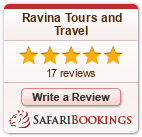3-week Tanzania Itinerary
Before spending some well-earned time relaxing on Zanzibar’s stunning white sand beaches, a 3-week safari allows you to experience both Tanzania’s well-known Northern Safari Circuit and its lesser-known and exclusive Southern Safari Circuit. Tanzania has gained a spot in my heart as one of my favorite safari destinations in Africa after I went there several times. The world-renowned Serengeti National Park and the ethereal Ngorongoro Crater are just two of the nation’s top national parks and wildlife viewing destinations.

However, there are certain difficult aspects of travel preparation that people frequently overlook, like long journeys on uneven terrain and accounting for downtime. It’s quite easy to ignore the extremely important practical details when you want to maximize every moment.
Why Go on a Safari in Tanzania
To begin with, the Northern Tanzanian region’s Serengeti, Tarangire National Park, and Ngorongoro Crater are grouped and rank among the world’s most pristine wilderness areas and famous safari destinations.
Both the massive Ruaha National Park and the massive Nyerere National Park in Tanzania’s south offer a rare chance to observe African wild canines and are more exclusive due to fewer visitors than those in the north.
Africa’s Big Five (lions, elephants, leopards, rhinos, and buffalo) as well as a plethora of other wildlife, including cheetahs, hippos, crocs, giraffes, zebras, hyenas, jackals, wildebeest, and an innumerable variety of deer and bird species, can all be seen in Tanzania.
Furthermore, Tanzania is home to the second-biggest land-based animal migration on Earth, which was formerly believed to be the largest until a larger migration was discovered in South Sudan. Witnessing nearly two million wildebeests and zebras rush over the Serengeti countryside, crossing many crocodile-infested rivers along the way, is regarded as one of the finest displays on earth.
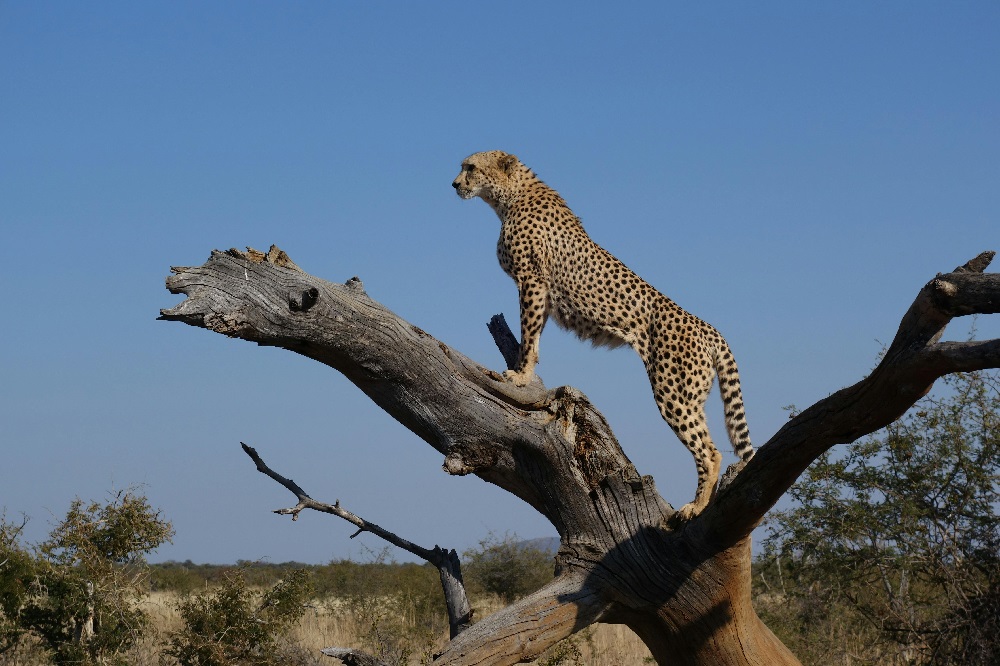
The scenery is also breathtaking. There are many lakes, including Lake Tanganyika, the longest and second-deepest lake in the world, a breathtaking coastline, the magnificent and historic Zanzibar Islands, and Africa’s tallest mountain, the majestic Mount Kilimanjaro. All of these offer more justifications for visiting Tanzania for a safari.
Regarding culture, there are more than 100 ethnic tribes in Tanzania, each with a unique character, intriguing customs, and dialects. Among them are the fierce Maasai, the economically dominant Chagga, and the Hadzabe, the only authentic nomadic hunter-gatherer group in the world.
How to do a Tanzania Safari Booking
It can be difficult to choose and reserve a Tanzania safari because there are so many game parks, hotels, camps, tour companies, and safari varieties, especially for first-time travelers.
However, there’s no need to worry; I’ll give you a summary of each of your four booking choices in this part, along with my personal preference.
Option 1: Self-Drive Safari
Visitors are permitted to drive around a few of Kenya’s national parks and wildlife reserves.
Self-driving safaris appear to be a fantastic way to save money and provide a great deal of flexibility. All you have to do is rent a car, purchase your park admission, and go exploring, right?
Sort of. Even though self-driving cars might seem like a fantastic idea, there are a few advantages and disadvantages to consider before making your choice.
Your ability to identify animals is the first and most crucial item you should consider. There, be truthful with yourself.
When it comes to identifying animals, a local guide can be really helpful. You can find animals with the assistance of guides that you otherwise would not have seen. You have a far better chance of seeing specific animals since they have a network of other guides who can tell them where they are.
Your safari budget is the second thing to think about. On safari, driving yourself could seem like a terrific way to save money, but when you sum everything up, the savings are not as large as you might first believe.
In contrast, Tsavo costs $61 during the high season and $41 during the low season, whereas Amboseli charges $118 during the hot season and $94 during the low season. These costs are per person, per day, and inclusive of tax.
If you intend to visit several parks during your two-week Kenya safari (which I strongly recommend), these expenses quickly mount up.
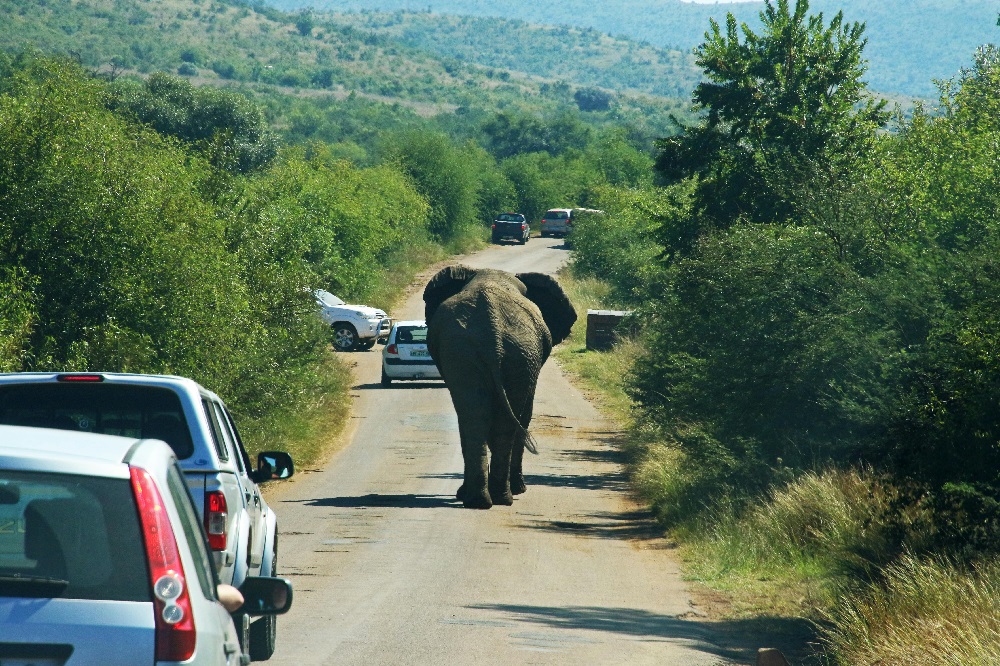
Whether you have a safari reservation with a travel operator or are going on a self-drive safari, the costs are the same. When calculating the total cost of a self-drive safari, keep in mind that the park fees are typically included in the tour price offered by the majority of tour companies.
Logistics-wise, you’ll need to rent a 4×4. Gas and car rentals can get expensive. Along with being reasonably adept at navigation to avoid getting lost in the parks, you’ll also need to grasp the fundamentals of car maintenance in case you have any problems while on safari.
Option 2: Local Tour Operator
Booking through a local tour operator is, in my opinion, a no-brainer after attempting self-drive safaris and making reservations through both domestic and foreign agencies!
The people on the ground are local tour providers. With a local guide, you’ll see a lot more creatures than you would on your own, and the best ones are intimately familiar with the areas they work in and can handle even the slightest nuances!
Additionally, their cost is not significantly higher than that of a do-it-yourself self-drive safari. Except for your driver’s guide, prices are essentially the same.
However, depending on the local tour operator you choose, your safari experience can vary significantly, so it’s important to do your homework and make an informed decision.
To see what other people have experienced, I advise reading as many guest reviews as you can on Google and Tripadvisor. This is among the best methods to determine if you want to make a reservation with a particular supplier.
As an alternative, you may hire a seasoned travel planner like me to help you go through the various tour alternatives and select the one that’s ideal for you.
Option 3: International Travel Agents
Using an overseas travel agency is an additional choice if you’re not sure that making your reservation through a local operator is the best course of action.
These foreign agents will take care of any problems that come up before, during, and after your trip and can assist you in booking your complete safari from beginning to end.
All of this additional assistance, though, can have a price. In terms of dependability and customer service, making a reservation through an international travel agency can seem like the “safest” choice, but it’s crucial to understand that the majority of foreign tour operators are merely acting as middlemen on safari excursions.
International agents typically mark up the price and then sell it to you after working with local tour operators. The only significant variation is the cost of your safari; otherwise, the final experience is typically the same. So, if you’re on a tight budget, keep that in mind!
International tour operators have the advantage of typically being “bonded,” which theoretically protects your money if they fail before your trip.
Option 4: Fly-In Hotel Safaris
Fly-in safaris are an additional choice if you are time-constrained and have a large budget.
Using light planes, these upscale safaris take visitors throughout a region or nation. Even if you only have a little holiday, this enables you to see a huge area.
Additionally, since you won’t have to drive between parks, you’ll have more time to spend in each reserve. Following your flight, you will drive 4X4s around the parks, enjoying an experience akin to that of a typical driving safari. Be aware, though, that hotel game drives are usually not private, so you will have to share your car with other visitors and vie for the finest views.
For those who wish to pack as much as they can into their trip, fly-in safaris are a good choice. But it makes sense that they are among the priciest excursions available; the cost of the safari package is significantly increased by all those quick flights!
Cost of a Tanzania Safari
The cost of a Tanzania safari depends on several variables, including lodging, park admission, and particular activities. The following, however, will provide you with a reasonable approximation of safari expenses if you make a reservation with a local operator.
Check out my most recent guide to Tanzania safari pricing for a more thorough cost breakdown.Private safari tours typically start at about $300 per person per day. This covers lodging, admission to the park, all meals, transportation, and all activities. The mid-range will cost you about $400 a day, while the luxury end might cost you up to $600 or more.
Best time to go on a Safari in Tanzania
Tanzania is a year-round vacation spot with something special to offer each month.
Dry Season (June – Mid-October)
The extended dry season, which runs from June to mid-October, is the ideal time of year to go on safari in Tanzania. Animals are easier to notice during the dry season because of the short grasses and sparse foliage. It is also easier to spot animals because they often gather near lakes, waterholes, and riverbanks.
Another advantage of traveling between June and mid-October is that there is a decreased risk of malaria because mosquito numbers are at their lowest during this time.
The best season to visit the coast and the Zanzibar Islands is from June until mid-October. The weather is ideal for swimming in the serene coastal waters, snorkeling the coral reefs, and spending time at the beach. Although it can be quite cold close to the peak, it’s a nice season to hike Mount Kilimanjaro further interior.
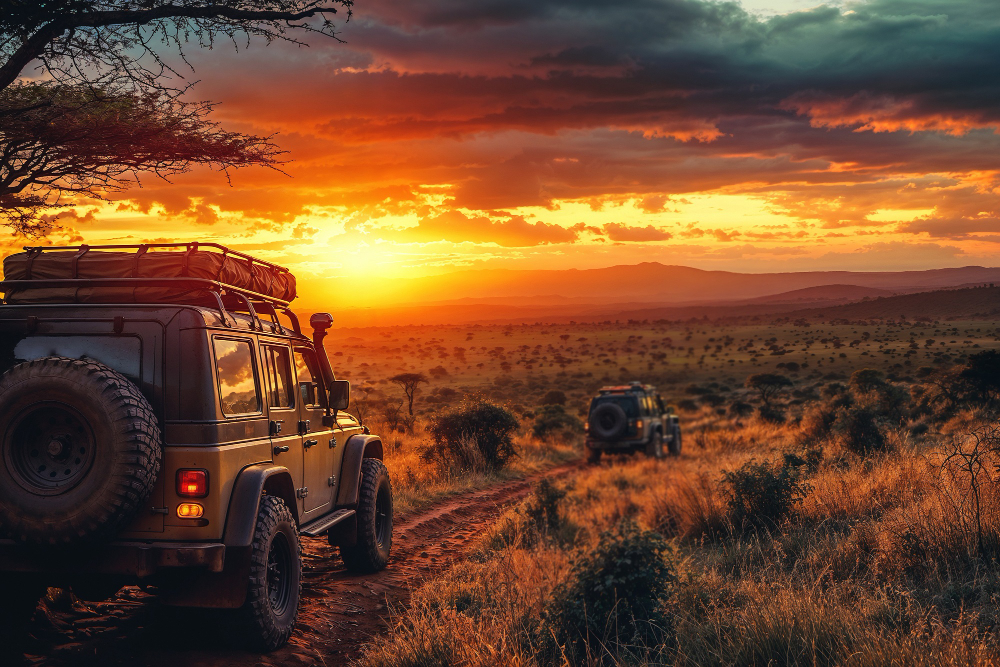
The only drawback is that it costs extra to schedule your safari during the lengthy dry season. Costs are high, and parks are at their busiest. You obtain a good rate, make sure you book well in advance.
July through September is the best time to visit Tanzania if you are primarily traveling there to see the Great Wildebeest Migration, especially at the notorious Mara River crossing.
Short Dry Season (January and February)
In the southern Serengeti, the greatest period to witness baby animals is from mid-January to mid-February. During this brief time, thousands of different buck species and more than 8,000 wildebeest calves are born! It’s a great time to watch Tanzania’s big cats and other predators in action since all of these newborn animals attract them out.
Traveling during these months is enjoyable because they are referred to as the “short dry season.” The landscape’s vivid vegetation, which is still lush and dense from the previous rains, makes for a breathtaking backdrop. But in some places, it can make it a little more difficult to identify animals.
Short Rains (Mid-October to Mid-December)
Be ready for some rain during the brief downpours, which usually occur in the afternoon. Parks are quieter and prices are lower than during the busiest time of year. As part of the annual Great Migration, the Wildebeests can be seen returning over the Mara River from mid-October to mid-November.
This time of year is ideal for birdwatching, and some herbivores are giving birth, which leads to huge cat activity. While Kilimanjaro trekking begins to improve in December, Zanzibar and Kilimanjaro are not at their finest during this time of year.
Long Rainy Season (March – May)
For most travelers, I would advise avoiding the months of March, April, and May, which are the wet season. These months are referred to locally as “the long rains” because of the regular afternoon showers and thunderstorms, as well as the uncomfortable humidity levels.
Positively, it is a fantastic time for birdwatchers to travel to Tanzania. With a plethora of amusing courtship rituals on show, the breeding season is already underway, and many migrating birds have arrived from the northern hemisphere. Prices are lower in the off-season since parks and resorts are at their most tranquil.
How Long can one spend in Tanzania
Even though a 3-day or 5-day itinerary might give you a taste of Tanzania, shorter itineraries only allow you to see a small portion of the nation and may leave you feeling rushed and as if you missed out on a lot of its attractions.
I suggest going on safari in Tanzania for at least 7–10 days, but 2 weeks will allow you enough time to fully enjoy and become engrossed in the country’s scenery and wildlife.
However, this 3-week itinerary is perfect if you want to explore some hidden jewels, learn about Tanzanian culture, and take in the country’s varied landscapes with a stop at the seaside.
Tanzania Safari Logistics
The majority of the safari logistics will be handled for you if you made your reservation through a travel agency or tour operator.
You will still need to make arrangements for a few remaining items, though. These consist of prescription drugs, immunizations, and visas.
visa
To enter Tanzania, visitors from the UK, Canada, Australia, and a number of European nations need a single-entry visa. $50 for a single-entry visa, which can be applied for online ahead of time to prevent delays at the airport or on arrival.
However, visitors from the United States must obtain multi-entry visas. These can be bought online or in person, and they cost $100.
Since clearance takes several weeks, it is best to submit a month or two before your trip.
Vaccines
There is little chance of yellow fever in Tanzania, and no vaccination record is needed. A Yellow Fever certificate is necessary, nevertheless, if you are traveling from Kenya, Uganda, or another high-risk region, or if you have already passed through an airport in one of those nations.
You should review the list of recommended vaccinations and see your physician several months before your trip, even if no further immunizations are required to enter Tanzania.
Your doctor might suggest vaccinations against typhoid, diphtheria, meningitis, and hepatitis A and B.
Medications
Precautions are required because Tanzania is a high-risk location for malaria, especially during the rainy seasons.
First, because side effects can vary, find out which anti-malaria tablets are right for you by consulting your doctor or pharmacist. In addition to taking medication, the best defense against getting bitten is to take a few simple precautions. Wear appropriate clothing, especially at night, and carry lots of bug repellent.
You must also bring any usual medications you use. Be careful to pack enough for the duration of your journey.
Before departing, ask your pharmacist what they suggest if you are prone to travel and altitude sickness on lengthy road trips or flights.
3-week Tanzania Safari
You will undoubtedly want to make the most of your stay in Tanzania because it is a huge country with a wealth of breathtaking wildlife, natural and cultural sights to visit! Especially in light of the money spent and the progress you’ve made.
After making several journeys and considering the suggestions of both natives and other travelers, I have meticulously crafted this three-week itinerary for Tanzania.

This schedule not only covers the best safari experiences, hidden treasures, and attractions of the nation, but I’ve also made sure to factor in some downtime.
After all, three weeks is a long time to travel over the lengthy highways of this large country, and to prevent burnout, you’ll need some downtime in between hectic safari days.
3-week Tanzania itinerary
Day 1: Arusha
You can spend today relaxing at your accommodation or starting to see some of the neighboring sights in Arusha, depending on when your aircraft lands and how exhausted you are after a lengthy trip.
I would advise making arrangements for your tour operator to pick you up at the airport and drive you to your first lodging so that your trip gets off to a smooth start. This is a pleasant, laid-back way to start your vacation because booking taxis after arriving in a new location can usually be a bit of a hassle.
Day 2: Tarangire National Park
Drive to Tarangire for three hours in the morning after leaving Arusha early.
You can take your first game drive around Tarangire National Park after you get there. It won’t be long after you approach the park’s gates before you see any wildlife for the first time!
Along the Tarangire River, which runs north through practically the whole park, are some of the greatest places to see it. The riverbanks are teeming with animals during the dry season, and you have an excellent chance of seeing a variety of species here, including some predators.
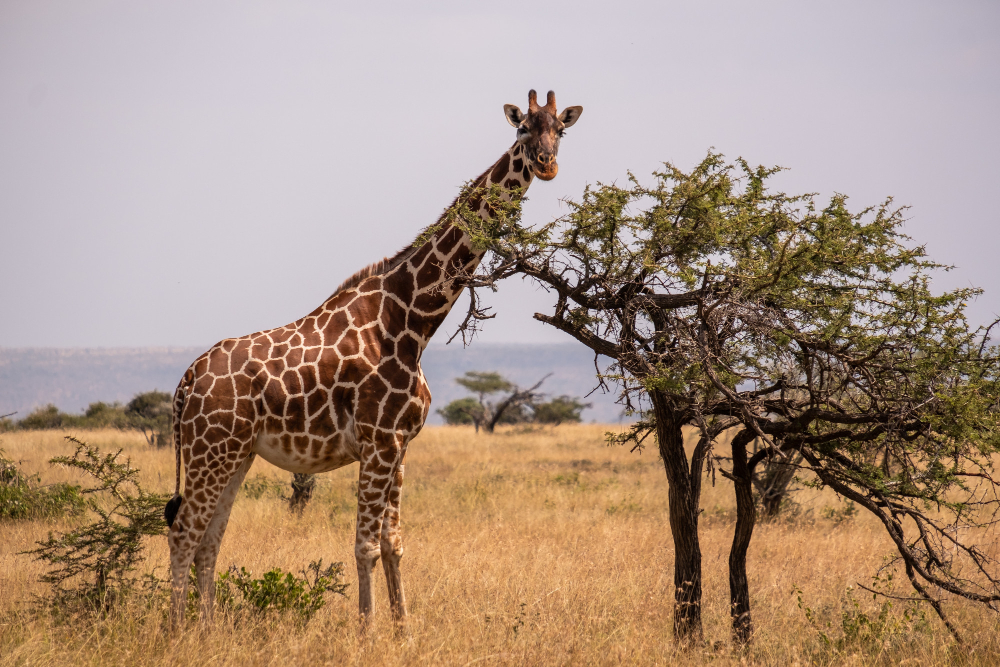
At your lodge, which is just outside the park, you will unwind in the evening.
Day 3: Tarangire National Park
Get up early, preferably before the sun comes up. Because predators are more active in the early morning when the weather is cooler, being at the park early will greatly boost your chances of sighting them.
There are several beautiful places to eat, and your lodge can set up a picnic meal. A popular spot is the charming Matete Picnic Site, which offers a view of the river.
The saline wetlands of Lake Burunge, a favorite spot for thousands of pink flamingos, will be your destination in the afternoon.
Driving across Lake Manyara and toward Mto Wa Mbu village will be your final activity of the day. There are representatives from 120 different tribes in this farming community, and taking a village stroll is a terrific way to learn about Tanzanian customs.
Day 4: Lake Manyara N.P
You will embark early on a full-day game drive at Lake Manyara National Park. You’ll probably spend the morning by the lake, which is a popular location for animals to congregate.
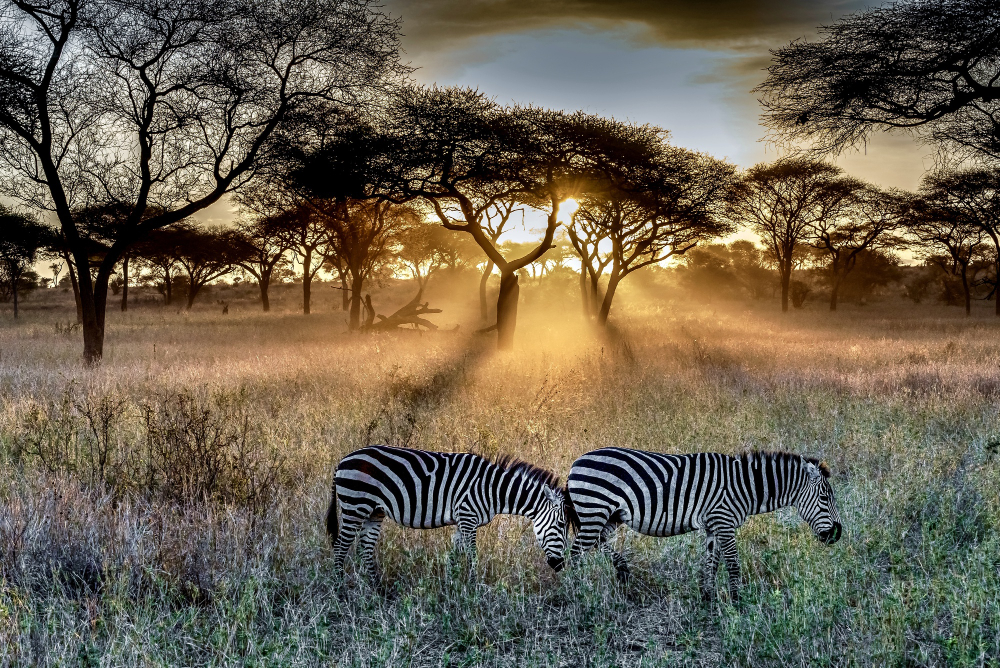
You will go across broad grassy floodplains after having a picnic lunch, possibly at the glistening Maji Moto Springs. Many zebras, waterbuck, and antelopes like grazing here, and cats enjoy hunting here as well! Additionally, you’ll enter some dense, lush woodlands where you should be able to see lots of elephants munching on the evergreen leaves.
Finish your day by traveling to Lake Natron, which is infamously known as the Deadliest Lake in the World.
Day 5: Lake Natron
Swimming isn’t one of the many exciting activities available at Lake Natron. Don’t even put your finger in this water.
Why? Since the waters of Lake Natron are extremely alkaline and heated! The waters contain some pink or crimson microorganisms that love salt and are partially nourished by mineral-rich volcanic springs. The water seems crimson and unearthly because of this! At least it is both gorgeous and lethal.
It is stunning to see from its shores all year round, but the vibrant color changes according to the constantly shifting levels of salinity (saltiness) and evaporation. Enjoy taking some spooky, Martian-style pictures of the colorful lake!
The towering Ol Doinyo Lengai, an active volcano behind the lake’s southern beaches, continues to spew white lava during eruptions. The high amounts of Natron in the lake and its lethal consequences are caused by this lava.
Short walks around the lake and observing the flamingo colonies and other birds are popular pastimes. The 120,000-year-old Hominid footsteps, which are remarkably well-preserved footsteps made by our early ancestors, are also open for viewing while you’re here! Lake Natron is also at a short distance from the 600-meter-high Ngaro Sero Gorge and its waterfalls.
Learn about the traditions and culture of the Maasai people by visiting a community and getting to know some of their fierce warriors and colorfully dressed women.
You will depart for Lake Eyasi in the afternoon after exploring Lake Natron.
Day 6: Hadzabe and Datonga Tribes
Join the hunters of the Hadzabe tribe on their daily hunt to start your day early. They exclusively use bows and arrows for hunting, and they bring small game, such as birds and impalas, back to the settlement.
If their hunt is successful, they could offer you to partake in a few pulls from their tobacco pipes or some barbecued free-range meat. (Of course, if you would rather, you are welcome to respectfully decline the offer.)
Along with other survival skills like wildlife tracking and tree climbing, you can learn how they use a bow and arrow and rub sticks to start fires while you’re here.
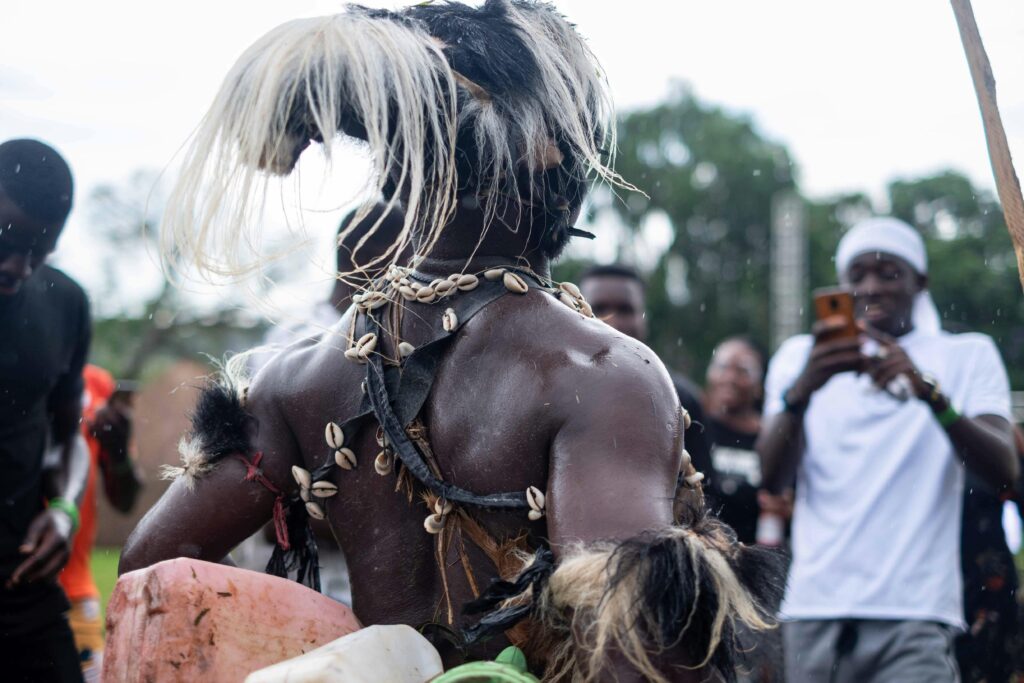
If you can’t handle that, you could accompany the women on their daily foraging expedition, gathering berries, fruit, and tubers—nutritious plant parts like stems or roots. You will probably end with a traditional song and dance.
It’s time to visit a Dotoga village in the afternoon. Learn about their ancient blacksmithing techniques here, which include making arrowheads, knives, spears, bracelets, rings, and other jewelry by melting iron, aluminum, or copper.
Travel to Karatu via car in the late afternoon.
Day 7: Ngorongoro Crater
Reaching the crater rim typically only requires a quick 30-minute drive uphill, depending on where your resort is located. You will first see the 610-meter-deep volcano crater bottom from the peak. You’ll start your descent into the crater bottom once you’ve enjoyed the view and shot a few hundred pictures.
You will have lunch in a safe picnic area with a view of a hippo pool after spending the morning observing a wide variety of game and birds.
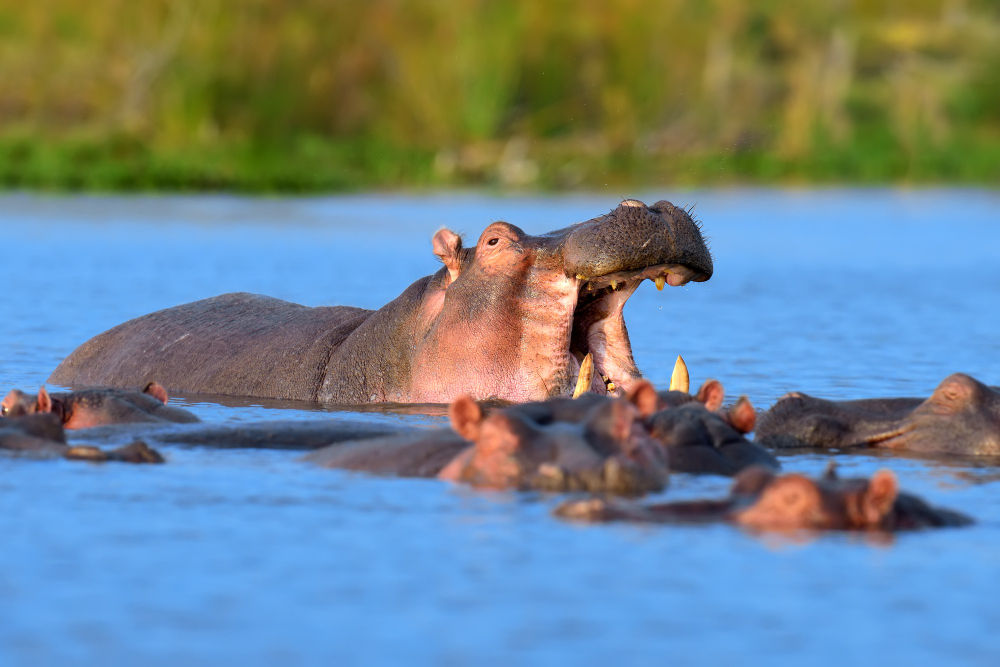
In the afternoon, the safari will continue for a short while before you start the three to four-hour trip to Serengeti National Park.
Day 8-10: Serengeti National Park
The next three days will be spent on game drives, when you will travel through magnificent landscapes and possibly witness the greatest number of wild creatures you have ever seen. There is a lot to see and do.
Game drives are typically started early to maximize your chances of spotting predator activity before they hide from the midday sun. After a long morning of driving through the wilderness, you will pause for lunch at one of the many picnic areas in the park before continuing till dusk.
After dinner and a well-earned nap, your days in the Serengeti will come to a close, and tomorrow you will repeat the experience!
Day 11: Serengeti to Ruaha N.P
Taking one of the three weekly flights from Seronera in the center or Kogatende in the Northern Serengeti is the most efficient method to travel from the Serengeti to Ruaha. The Ruaha National Park is an hour’s drive from the Msembe/Jongomero airstrips, where these flights will drop you off.
Alternatively, you can fly indirectly through Arusha and Dar es Salaam, though these flights might be challenging to find. I would advise you to seek your local tour operator for assistance in organizing your travel schedule.
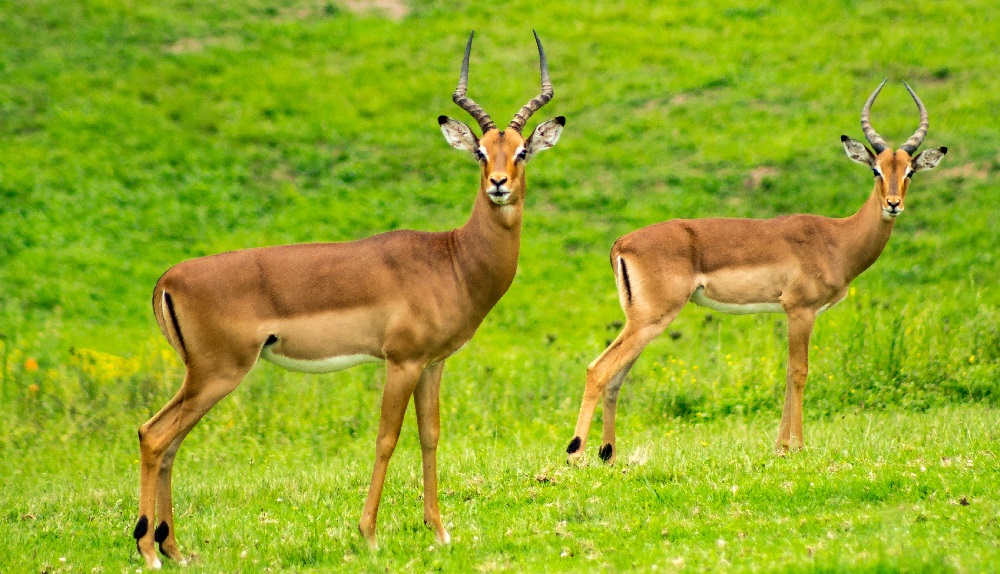
The simplest option is the direct flight!
Thankfully, you will be able to enjoy the park for the next two days in Ruaha after enduring the trek.
Day 12-13: Ruaha N.P
Ruaha is one of Tanzania’s largest and most stunning national parks, but what sets it apart from the other, more popular parks is the relatively low volume of visitors.
With all the wildlife you could want to see, Ruaha offers miles and miles of peaceful seclusion. This is the place to go if you want to experience Africa’s wilderness areas without feeling overcrowded by safari trucks.
The park’s diverse terrain, which includes savannah, woods, and streams, is home to many large predators, including lions, leopards, cheetahs, hyenas, and wild dogs. Along with more than 500 different bird species, you might see massive herds of elephants, buffalo, zebras, giraffes, crocodiles, hippos, wildebeest, and countless other bucks.
Day 14: Ruaha and Nyerere N.P
It’s too far to drive from Ruaha to Nyerere, so you’ll have to take a plane.
You’ll arrive at your chosen lodge in time for an afternoon game drive because, fortunately, this travel day is easier than the previous one.
After you arrive, you will spend the next two days at one of the several airstrips spread throughout the Nyerere.
Day 15: Nyerere National Park
The greatest chance to go along the Rufiji River and explore the lake systems is on a full-day Nyerere Boat safari. You may observe a variety of wildlife and birds from the water.
In addition to elephants, giraffes, zebras, buffaloes, waterbuck, and warthogs come to cool off and drink, you might see crocs and hippos in the water or along the shore. You might observe predators come here for a hunt or a drink because they get thirsty, too!
Look for goliath herons, kingfishers, fish eagles, and the characteristic black and white colobus monkeys that fly high in the dense tree canopy that lines the beaches. Lunch will be served at a peaceful location along the banks during the boat cruise.
Day 16: Dar es saalam
Fly to Dar in the morning and check into the hotel of your choice. You can either get some rest or explore the city in the afternoon.
Day 17: Zanzibar
Fly or take the ferry to Zanzibar in the morning.
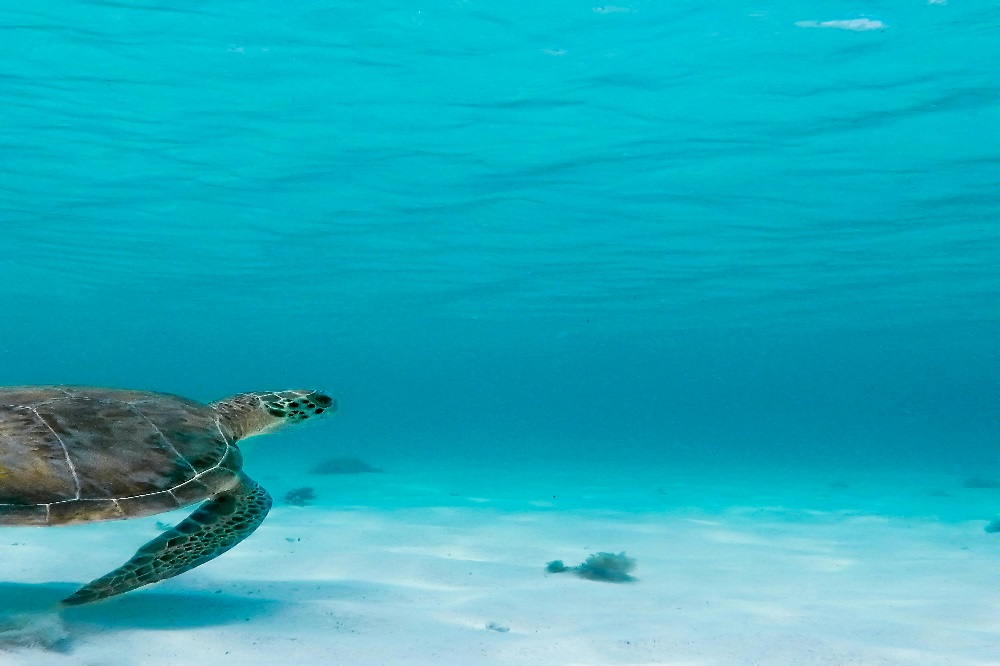
While flying is a speedy 25-minute journey, ferry rides take about an hour and twenty minutes.
There is no need to set up an early alarm because there are frequent daily flights and ferries to accommodate your schedule.
Day 18-21: Zanzibar
There are plenty of amazing sights and exciting activities to do in Zanzibar, so no matter how long you decide to stay, you won’t run out of things to do. You can travel around the island whenever you want and spend as much time as you like if you rent a car.
Just a handful of these locations and activities are included below for your consideration.
Relaxing on the Beach
The entire Zanzibar Islands are home to miles of breathtaking beaches where one may unwind. Almost everywhere you look, you’ll see tall, swaying palm trees, soft white sand beaches, and crystal-clear water. Although each beach has its unique personality and allure, they are all equally stunning.
Nungwi Beach, located on Zanzibar’s northwest tip, is among the best beaches for relaxing and all-around water sports, as well as breathtaking sunset views. Another hidden gem is Kendwa Beach, which is ideal for partying at night and unwinding during the day. Another stunning beach on the southeast coast is Paje Beach, which is great for swimming, kayaking, and kitesurfing.
Snorkeling
One of the greatest places in Africa to go snorkeling is Zanzibar. Barrier reefs encircle the shorelines of nearly every island. Some of these reefs are safe for small children and ideal for total beginners because they are only a few feet from the coast in very shallow water.
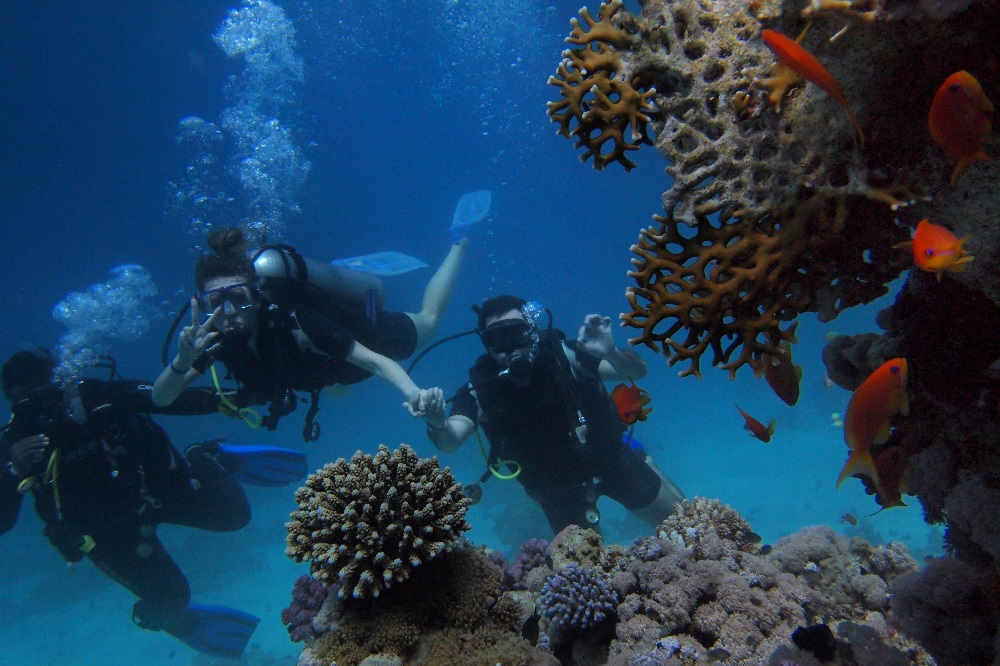
Numerous colorful reef species, including the graceful Moorish idol, multicolored parrot fish, angel fish, lionfish, and the ever-popular, can be found throughout the shallow reefs.
The coral reefs are also home to a variety of predatory species, including huge grouper, barracuda, and trevally. You could be fortunate enough to see a turtle or two grazing on the corals.
Stone Town
Located on the westernmost tip of Zanzibar City, the old Stone Town is a must-see. All of the cultures of Zanzibar’s history and present residents are packed into one small area of less than one square kilometer, hidden in plain sight in all their splendor.
Set aside time to explore its winding, tiny streets for at least a morning or even a whole day, stopping at opulent cathedrals, ornate mosques, intimidating old forts, and the somewhat unsettling slave markets of a fortunately past period.
Along with enticing coffee shops, restaurants providing delicious local cuisine, and colorful street vendors going about their business, you’ll pass by interesting stores selling spices, colorful textiles, local artwork, and souvenirs.
Final Thoughts
That’s it. Three wonderful weeks spent exploring Tanzania and taking in almost everything it has to offer. Between the serene and welcoming seas of Zanzibar Island, where time seems to stop, and the thrill and drama of the Serengeti, where you never know what you’ll stumble into from minute to minute.
After seeing things you’ve likely never seen on National Geographic and travel shows, Tanzania will make you feel like your “mission accomplished.” You could find yourself wanting to return. I was affected by it!

